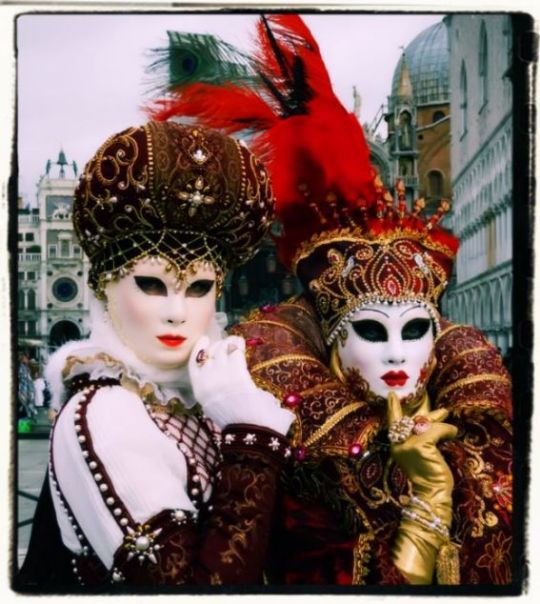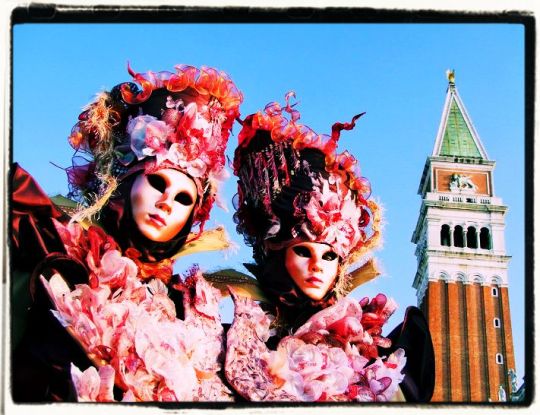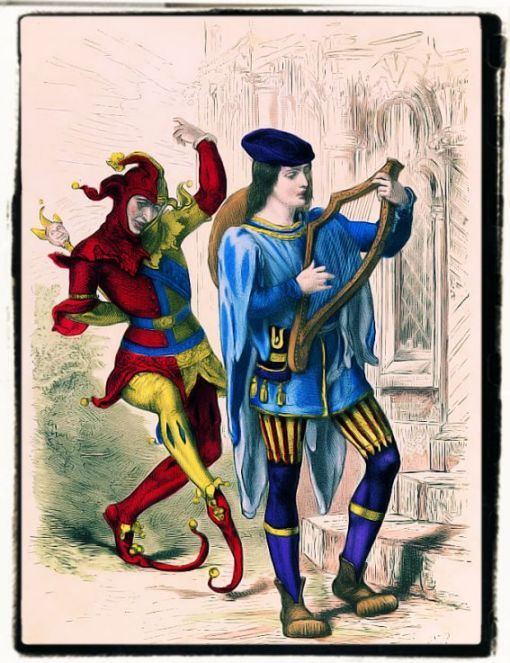#Burlamacco
Explore tagged Tumblr posts
Text
Carnival festival

Venice Carnival in Italy Carnival festival, an article that analyses the meaning of this celebration in the Christian societies with references to the most famous world Carnival parades and the Mardi Gras day. The principle of laughter and the carnival spirit on which the grotesque is based destroys this limited seriousness and all pretense of an extratemporal meaning and unconditional value of necessity. Mikhail Bakhtin Happiness is simply a temporary condition that proceeds unhappiness. Fortunately for us, it works the other way around as well. But it's all a part of the carnival, isn't it? Federico Fellini Like Mardi Gras and Halloween rolled into a public party at the Playboy mansion, Rio during Carnaval is like no other place on earth. And the freak-flags fly like the color guard of an invading army. James Schannep On the world stage we are nothing but poor actors, and sometimes it is useful to be able to mask our sad roles. Carl William Brown During carnival, men wear an extra mask. Xavier Forneret Life is like Carnival..., you don’t know what joke it’s gonna do you! Aida Nasic The mask is as old as humanity itself and it is the symbol of the transformation of man into another ego. O. Eberle Good and evil are matters of habit, the temporary prolongs and the mask, in the long run, becomes the face. Marguerite Yourcenar Modern solidarity is only an attempt to mask one’s own stupidity by doing exercises of false humanity. Carl William Brown You will learn at your own expenses that in the long journey of life you will encounter many masks and few faces. Luigi Pirandello Lent comes after Carnival to remind us that we are dust and not confetti. Franco Lissandrin

Venice carnival masks Each person is but a "theatrical mask", an actor who plays a role and assumes a personality, that contributes to enrich the comic theatricality of human stupidity. Carl William Brown Carnival, season just before Lent, celebrated in some Roman Catholic countries by merrymaking, processions, dancing, and feasting. The word probably comes from the medieval Latin word "carnelevarium", meaning "to take away meat". As a matter of fact during Lent, Roman Catholics and some other Christians traditionally abstained from the consumption of meat and poultry, hence the term "carnival", from "carnelevare", to remove meat. In the past, Catholics were forbidden to eat meat during Lent, a 40-day period of fasting and penitence before Easter. Carnival provided a last opportunity for indulgence and partying before the abstinence and privations of Lent. Today, the word carnival is also used to describe many kinds of public festivities and outdoor amusements. Carnival is celebrated in most countries of Europe and the Americas, especially in predominantly Roman Catholic countries and communities. The first day of the Carnival season varies from country to country. In southern Germany and Austria, where it is known as Fasching, it begins on January 6, the Epiphany, and culminates in festivities two days before Lent. In Cologne and other parts of Rhineland Germany, the season commences at 11:11 on the morning of November 11, and the revelry leads up to the Tolle Tage ("crazy days"), the two days before Lent, which are celebrated with parades, singing, and dancing. In parts of France and southern European countries, Carnival begins on Quinquagesima Sunday, the Sunday before Ash Wednesday, and finishes on Shrove Tuesday, the day preceding Ash Wednesday. Ash Wednesday, which remains a day of fasting for Roman Catholics, marks the beginning of Lent.

Italian mask characters When fasting and penitence were more commonly observed during Lent, Shrove Tuesday became a time of feasting, dancing, and general merrymaking. In New Orleans, Louisiana, carnival festivities known as Mardi Gras ("Fat Tuesday" in French) are celebrated on Shrove Tuesday. The name “Fat Tuesday” comes from the practice of using up any meat and fats in the house before the start of Lent. Some of the most colorful Carnival celebrations take place in Latin America. The dazzling Carnival celebration held in Rio de Janeiro, Brazil, draws tourists from around the world. It begins on the Saturday before Ash Wednesday and continues for four days and four nights of parades, balls, marching bands, and general revelry. The high point of Rio’s Carnival is a contest among various samba schools that compete for the best costumes, floats, music, and dancing. Carnival dates back to pagan festivals in Roman times that celebrated the return of spring and rebirth of nature. Later on carnival became associated with preparations before the start of Lent. European settlers brought carnival to the Americas, where it was transformed by African and Native American traditions of music and dance. Mardi Gras, also known as Shrove Tuesday or Carnival, annual festival marking the final day before the Christian fast of Lent, a 40-day period of self-denial and abstinence from merrymaking. Mardi Gras is the last opportunity for revelry and indulgence in food and drink before the temperance of Lent. The term Mardi Gras is French for "Fat Tuesday."

Masks disguises The date of Mardi Gras varies from year to year, always falling between February 3 and March 9. Although Mardi Gras refers to a specific day, the term often encompasses a much longer period of celebrations leading up to Mardi Gras Day. The Carnival season is marked by spectacular parades featuring floats, pageants, elaborate costumes, masked balls, and dancing in the streets. Some scholars have noted similarities between modern Mardi Gras celebrations and Lupercalia, a fertility festival held each February in ancient Rome. However, modern Carnival traditions developed in Europe during the Middle Ages (5th century to the 15th century) as part of the ritual calendar of the Roman Catholic Church. Today pre-Lenten Carnivals are celebrated predominantly in Roman Catholic communities in Europe and the Americas. Cities famous for their celebrations include Nice, France; Cologne, Germany; and Rio de Janeiro, Brazil. New Orleans, Louisiana, holds the most famous Mardi Gras celebration in the United States. Residents of New Orleans have been celebrating Mardi Gras since the 18th century. Mobile, Alabama, has a lesser known but equally historic Mardi Gras tradition. Mardi Gras is informally observed in many North American cities, usually invoking the spirit of the New Orleans festivities. Not all Mardi Gras celebrations take place in urban areas. Distinctive Mardi Gras traditions are also maintained by the Cajuns, an ethnic group that derives its culture from French Canadian refugees who settled in southwestern Louisiana during the 18th century. In rural Cajun communities, costumed revelers on horseback ride from house to house begging for ingredients to make gumbo, a thick, strongly flavored soup. Other members of the community await the riders and make preparations for a party. Around sunset, the riders make a dramatic entrance, present the crowd with the gumbo ingredients they have gathered, and join the party.

Burlamacco Viareggio Carnival Carnival in Viareggio, Italy. A parade of floats moves through the streets of Viareggio, Italy, during the annual Carnival festival. The floats, created from a variety of materials by the city’s leading artisans, make reference to the major events and personalities of the preceding year. Viareggio Carnival is one of the most important and famous Carnival in Italy, first organized in 1873! The program lasts about 15 days, being the Mardi Gras the last one. In 2022 on February 20th, 24th, 27th and on March 1st, 5th, 12th. The Carnival offers 5 parades of extraordinary and very colorful allegorical wagons at Viali a Mare The huge wagons, that have been charming the visitors for years, made famous the papier-mâché artists in the world, who yearly amaze the audience and challenge each other with incredible technical and artistic creations. The constructor masters are generally inspired by current issues: this year, beyond the characters and the wagons of satirical Italian and international politics. Every parade is composed of a caravan of 14 wagons, 9 dressed up groups, and 9 single masks. Every wagon is high more than 20 meters and 12 meters wide and more than 250 dressed-up figures dance on the “first-class” wagons. More than 25 craft enterprises and one thousand people are the creators of the wagons. Most of them are sons of art who inherited the secrets and the abilities of the work by their fathers and grandfathers. At the end of the Carnival the winners are elected through a merit ranking. The symbol of Viareggio Carnival is the Burlamacco mask, created by the painter and graphic Uberto Bonetti in 1930. The Burlamacco, inspired by the masks of the Art Comedy, was realized in a futuristic style and it sums up 2 interesting moments of Viareggio: white and red colors represent summer and the colors of the umbrellas at the beach during the 1930’s, and then during winter they became the symbol of the Carnival period.

Viareggio carnival parade The festival of Carnival, with its spectacular street parades and vibrant music, has become one of the most potent images of Brazil. Its roots lie in the European Mardi Gras, a lively festival, which precedes the fasting and prayers of the Roman Catholic holy season of Lent. Carnival begins on the Friday before Ash Wednesday and lasts for five days. In Brazil it seems to have first occurred in Bahia in the mid-17th century and in Rio de Janeiro in the 1850s, where it was associated with street parades and elegant private balls. Carnival did not take on its present spectacular form in Rio until the 1930s, when the dance known as the samba emerged in the favelas (shantytowns) of the city. Samba “schools” based in the favelas compete to create the most spectacular groups of extravagantly costumed dancers and original samba songs. In Rio they now parade through the sambadrome (a street stadium) before vast crowds of Brazilians and foreign tourists. The more traditional street parties and balls also continue. Carnival is celebrated throughout Brazil, but the most spectacular celebrations outside Rio take place in Salvador, Recife, and Olinda, although the nature of the events varies. Rhythm, participation, and costumes vary from one region of Brazil to another. In the southeastern cities of Rio de Janeiro, São Paulo, and Vitória, huge organized parades are led by samba schools. Those official parades are meant to be watched by the public, while minor parades (blocos) allowing public participation can be found in other cities, like Belo Horizonte, also in the southeastern region. The northeastern cities of Recife, Olinda, Salvador, and Porto Seguro have organized groups parading through streets, and public interacts directly with them. It is a six-day party where crowds follow the trios elétricos through the city streets, dancing and singing. Also in northeast, Olinda carnival features unique characteristics, heavily influenced by local folklore and cultural manifestations, such as Frevo and Maracatu.

Carnival parade in Rio de Janeiro The typical genres of music of Brazilian carnival are, in the Southeast Region in general, mostly cities of Rio de Janeiro and São Paulo: the samba-enredo, the samba de bloco, the samba de embalo and the marchinha; and in the Northeast Region including Pernambuco (mostly cities of Olinda and Recife): frevo and maracatu, and Bahia (mostly the city of Salvador): samba-reggae, pagode (also a type of Samba) and the main genre axé music. These rhythms were mainly developed by Afro-brazlians and Pardos, incorporating and adapting many cultural influences, from the percussion beats of Africa to the military fanfares of Europe and iberian music in the use of instruments like pandeiro and cavaquinho. Carnival is the most popular holiday in Brazil and has become an event of huge proportions. Except for industrial production, retail establishments such as malls, and carnival-related businesses, the country unifies completely for almost a week and festivities are intense, day and night, mainly in coastal cities. Rio de Janeiro's carnival alone drew 6 million people in 2014, with 550,000 being foreigners. Brazilian carnival in essence is a synthesis of European, indigenous, and Afro-Brazilian cultural influences, each group has played an important role in the development of the structure and aesthetic of the Brazilian carnival of today. For instance, the main rhythms used in carnival celebrations were developed by Afro-Brazilians and make use of European instruments like the cavaquinho and pandeiro to create melodies and arrangements, also the fantasies and costumes in the Brazilian carnival borrow concepts from the clothing of the natives, like the use of feathers and the tendency to use lighter pieces of clothing. Historically its origins can be traced to the Portuguese Age of Discoveries when their caravels passed regularly through Madeira, a territory which already celebrated emphatically its carnival season, and where they were loaded with goods but also people and their ludic and cultural expressions. On the same topic you can also read: Storia del Carnevale in Italia e nel mondo Aforismi e citazioni sul Carnvale https://www.youtube.com/watch?v=HaoU6aa-_FE https://www.youtube.com/watch?v=M1Oc_resvL4 https://www.youtube.com/watch?v=q6sHx8dl1S8 Read the full article
#AshWednesday#brazil#Burlamacco#Carnival#Catholics#Christian#countries#European#FatTuesday#festival#Lent#MardiGras#mask#parades#RiodeJaneiro#Roman#societies#Venice#Viareggio
0 notes
Photo
After all, it was only a two sentence story, so how many clowns could it possibly contain?
Unfortunately, it had Grock and Bellini and Batatinha and Rebo and Bim Bom and Weary Willie and Blinko and Charlie Rivel and the Chickys and Chuchin and Coco and Drosta and the whole Fratellini family and Frosty Little and Harty Hart and both Joe Jacksons and Karandash and Lou Jacobs and Popov and the Rastellis and Remi and Rosie Sunshine and Versace and Zig and Zag and Chocolat and Buffo and Cepillín and Elon Musk and Dimitri and Fumagalli and Pogo and Le Clown Gordoon and Jyjou and Bello Nock and Lalala and Vercoe and T.J. Tatters and Los Chicharrines and even Charlie Chaplin and Buster Keaton and Jacques Tati and the Keystone Cops and Laurel and Abbott and Hardy and Costello and Ben Turpin and Chester Conklin and every Marx Brother except Zeppo and Shaggy 2 Dope and Slim Pickens and all three Stooges and Bozo and Charlie Chalk and Doink and Loonette and arguably Mr Bean and Ekaterina Pirogovskaya and Eric Davis and Sylvester the Jester and Mump and Smoot and Binky and Krusty and Buggy and Harley Quinn and Mark Hamill as the Joker and Koko and Pennywise and Ronald McDonald and Sweet Tooth and Blue Nose and Mr. Mime and Burlamacco and Jack Box and Clown Ferdinand in it, among others.

102K notes
·
View notes
Text
Evoluzione dell’abbigliamento sportivo al Viareggio Cup World Football Tournament

Storia del Torneo di Viareggio
La nascita del Centro Giovani Calciatori avvenne il 20 novembre 1947. Fu il presidente Torquato Bresciani a concepire l’idea di un torneo internazionale riservato alle squadre giovanili. Una prova generale si svolse già nel febbraio 1948 con la partecipazione dei bar cittadini. La prima edizione ufficiale ebbe luogo nel 1949, con il nome Coppa Carnevale, e il trofeo rappresentava Burlamacco, maschera tradizionale del carnevale viareggino.
Con il passare degli anni, il torneo acquisì sempre più rilevanza internazionale. Il Partizan di Belgrado fu il primo club straniero a vincere il torneo nel 1951. Il Dukla Praga vinse sei edizioni tra il 1964 e il 1980, dimostrando la crescente competitività delle squadre straniere. Agli inizi del nuovo millennio, la competizione cambiò nome in Viareggio Cup World Football Tournament, un segno del suo crescente prestigio globale.
Nonostante il prestigio, il torneo ha subito un declino progressivo a causa della nascita nel 2013 della UEFA Youth League, che mette di fronte le formazioni Under-19 delle migliori squadre europee. Milan, Juventus e Inter, le squadre italiane più titolate del torneo, hanno ridotto la loro partecipazione negli anni 2010 e 2020. Nel 2019, il torneo ha visto l’introduzione di una versione femminile, seguita da interruzioni nel 2020 e 2021 a causa della pandemia di COVID-19. Dal 2023, il torneo ha nuovamente accolto le formazioni Primavera.
Formula e Regolamento del Torneo
Il regolamento del Torneo di Viareggio ha subito varie modifiche dal 1958, mantenendo però alcuni aspetti caratteristici:
Presenza di almeno 16 formazioni partecipanti.
Gironi all’italiana con qualificazione delle prime due classificate ed eventuali ripescaggi.
Fase a eliminazione diretta su incontri unici, con supplementari e rigori in caso di parità.
Sedi di gioco distribuite in Toscana e regioni confinanti.
Limite anagrafico fissato a 19 o 21 anni.
Record e Statistiche
Milan e Juventus sono le squadre più titolate del Torneo di Viareggio, con nove vittorie ciascuna. La Fiorentina ha partecipato al maggior numero di finali, con 17 presenze. Andrea Mazia detiene il record per il maggior numero di gol complessivi e per il maggior numero di gol in una singola edizione. Juventus e Inter hanno prodotto il maggior numero di vincitori del premio Golden Boy, assegnato al miglior giocatore del torneo dal 2009.
L’importanza dell’Abbigliamento Sportivo nel Torneo di Viareggio
L’abbigliamento sportivo riveste un ruolo cruciale nel Torneo di Viareggio, contribuendo non solo alla performance dei giovani calciatori ma anche alla loro sicurezza. L’abbigliamento sportivo, composto da maglie, pantaloncini, calzettoni e scarpe, è progettato per garantire il massimo comfort e favorire la mobilità. Materiali traspiranti e leggeri aiutano i giocatori a mantenere una temperatura corporea ottimale durante le partite intense.
Negli anni, l’innovazione tecnologica ha migliorato notevolmente l’abbigliamento sportivo, introducendo tessuti avanzati che riducono l’attrito e migliorano la gestione del sudore. Anche la protezione è un aspetto fondamentale, con l’abbigliamento sportivo che include parastinchi e altri dispositivi di sicurezza per prevenire infortuni.
Abbigliamento Sportivo e Marketing
Oltre agli aspetti funzionali, l’abbigliamento sportivo è un elemento chiave per il marketing del torneo. I kit delle squadre partecipanti, spesso realizzati da marchi di fama internazionale, diventano oggetti di desiderio per i tifosi e gli appassionati di calcio giovanile. La vendita di questi articoli contribuisce significativamente alle entrate delle squadre e del torneo stesso.
L’Impatto dell’Abbigliamento Sportivo sulle Prestazioni
Un abbigliamento sportivo adeguato può fare la differenza nelle prestazioni dei giovani calciatori. Maglie aderenti ma elastiche, che permettono una libertà di movimento senza ostacoli, e scarpe con suole progettate per offrire la massima trazione sui diversi tipi di terreno di gioco, sono fondamentali. L’evoluzione dell’abbigliamento sportivo ha permesso ai giocatori di raggiungere nuovi livelli di velocità e agilità.
Abbigliamento Sportivo e Identità di Squadra
L’abbigliamento sportivo non è solo un fattore di prestazione; è anche un simbolo di identità. I colori e i disegni delle maglie rappresentano l’orgoglio e la storia delle squadre partecipanti. Durante il Torneo di Viareggio, i giovani calciatori indossano con orgoglio i colori dei loro club, creando un forte senso di appartenenza e motivazione.
Conclusione
Il Torneo di Viareggio continua a essere un evento di grande importanza nel panorama del calcio giovanile internazionale. Nonostante le sfide e le trasformazioni degli anni recenti, rimane un palcoscenico fondamentale per i giovani talenti. L’abbigliamento sportivo gioca un ruolo essenziale, non solo migliorando le prestazioni dei giocatori ma anche contribuendo alla loro sicurezza e alla promozione del torneo. Con l’evoluzione continua delle tecnologie dei tessuti e del design, l’abbigliamento sportivo continuerà a influenzare positivamente il mondo del calcio giovanile, garantendo che il Torneo di Viareggio rimanga un appuntamento irrinunciabile per le future stelle del calcio mondiale.
Leggici su Linkedin
Indicaci come contattarti
#abbigliamento#abbigliamentopersonalizzato#abbigliamentosportivo#arcobaleno#arcobalenomondovi#calcio#divise#divisecalcio#football#footballuniform#soccer#socceruniform#stagioneagonistica#sportwear#sportswear
1 note
·
View note
Text
Berlin65 at 30 Stanley Street
Great German Fusion Food in the CBD! Berlin65 takes over the old Burlamacco Stanley street spot! As you can see they have completely gutted the old style and added in a more street feel, especially with the wall mural by a local artist! Berlin65 Menu Check out the extensive Berlin65 Menu items! Breads SIMIT BREADMolasses, Sesame, Chili Tomato Dip – $4.50 TURKISH FLATBREADGarlic Yogurt,…

View On WordPress
0 notes
Text





ELISA BURLAMACCHI PRESENTA A POCHETTE VICTORIA
Nobiltà, eleganza, eccellenza. Questi sono i punti cardine del luxury brand Elisa Burlamacchi che, attraverso le sue creazioni, riporta in auge il nome di una famiglia che da sempre è stata profondamente legata al territorio lucchese e Versiliese e dal quale deriva il noto“ Burlamacco” simbolo di Viareggio. Must have di questo autunno è la Pochette Victoria con la sua “autorevole bellezza”.
0 notes
Text
Il Burlamacco: origine della maschera

Burlamacco, maschera ufficiale del Carnevale di Viareggio, nasce nell’estate del 1930 ad opera di Uberto Bonetti, docente, pittore, grafico e scenografo. Simbolo della manifestazione viareggina, è un “misto” delle maschere della Commedia dell’Arte. Il suo abito è composto da una tuta a scacchi bianchi e rossi (i colori degli ombrelloni sulla spiaggia), suggerita dal vestito a pezzi di Arlecchino, ha un pompon preso in prestito dal camicione di Pierrot, una gorgiera bianca e ampia alla Capitan Spaventa, un copricapo rosso simile a quello di Rugantino e un mantello nero svolazzante tipico di Balanzone. Il nome si rifà a Buffalmacco di boccaccesca memoria, pittore fiorentino e personaggio del Decamerone. Bonetti sostituì la radice “buffa” con “burla”, ma un contributo arrivò probabilmente anche dal cognome lucchese Burlamacchi, già utilizzato per il canale del porto: il Burlamacca. La prima apparizione di Burlamacco è stata sul manifesto del Carnevale 1931. Ritratto mentre giunge dal mare, camminando sui moli paralleli di Viareggio, ha al suo fianco una fanciulla in costume da bagno (nello stile dell’epoca), con il nome di Ondina, immagine solare dell’estate da trascorrere sulle spiagge viareggine
#toyintheattic#toybox#blog post#burlamacco#viareggio#versilia#artwork#scetch#bonetti#carrara#marinadicarrara#carnevale
1 note
·
View note
Photo

Un inconsueto lanciatore di #bolledisapone… #Burlamacco #Viareggio #Sky #Blue #Carnival #Carnevale #soapbubbles (presso Viareggio, Italy) https://www.instagram.com/p/CbnueaWKSMX/?utm_medium=tumblr
0 notes
Photo

Saluti da Burlamacco. Greetings from Burlamacco. . #viareggio #burlamacco #maschera #carnevale #coriandoli #mask #italia #stellefilanti #photooftheday #versilia #viso #art #photography #carnevalediviareggio #travel #masks #giannimicheli #arte #instagood #corsimascherati #travelphotography #beauty #europe #beach #madeinitaly #toscana #tuscany #igersviareggio #igersitalia #igdaily (presso Viareggio, Italy) https://www.instagram.com/p/CWiWvsPATVu/?utm_medium=tumblr
#viareggio#burlamacco#maschera#carnevale#coriandoli#mask#italia#stellefilanti#photooftheday#versilia#viso#art#photography#carnevalediviareggio#travel#masks#giannimicheli#arte#instagood#corsimascherati#travelphotography#beauty#europe#beach#madeinitaly#toscana#tuscany#igersviareggio#igersitalia#igdaily
0 notes
Photo

Per il fiorentino che passa le vaacanze a Viareggio,insalata Fiumetto ...mare-fiume #bypaolo#montelentiscal#robertobenigni#burlamacco#toscana#marligure# (en Santa Brígida, Canarias, Spain) https://www.instagram.com/p/CTMzurNKcWl/?utm_medium=tumblr
0 notes
Photo

Una bella giornata tra arte e carnevale con @pierofigura #arte #arr #design #carnevalediviareggio #burlamacco #carnevalediviareggio2021 https://www.instagram.com/p/CDUNyj0iMQC/?igshid=1c89qcft5yz1
0 notes
Link
#viareggio#toscana#toscanatoday#matteobaudone#versilia#carnevale#burlamacco#festivalburlamacco#festivaldiburlamacco#festivalburlamacco2020#festivaldiburlamacco2020#gara#canzoni#canzone#musica#garacanzone#garacanzoni#garacanora#festivalcanoro#festivalcanzone#festivalcanzonecarnevale#festivalviareggio#canzonecarnevale#canzonicarnevale
0 notes
Photo





In the article, we have gathered a list of top 10 byo restaurants in Singapore with no corkage fee which will take care of all your party mood along with all the friends and family gatherings this 2019. So, read more to get more information.
#Burlamacco#Gattopardo Ristorante Di Mare#Gunther’s#La Braceria#New Ubin Seafood#OTTO#Tatsuya#Wah Lok#Wild Rocket#Zafferano#Urban Journey
0 notes
Text
Ma al Comune di Viareggio c'è qualcuno che boicotta sistematicamente la circolazione delle biciclette?
Ma al Comune di Viareggio c’è qualcuno che boicotta sistematicamente la circolazione delle biciclette?


Mal di testa da traffico? A Viareggio c’è una sola soluzione: più strade e più automobili, a quanto pare. Come suggerisce sin dal 1920 la Fiat.
Al Comune di Viareggio, fra i tecnici, i funzionari o i politici, sembra che ci sia qualcuno che boicotta sistematicamente le biciclette come mezzo per muoversi in città:
2013 – Transito vietato in via Fratti… Il sindaco vieta il transito delle…
View On WordPress
#"Via del mare"#asse di penetrazione#Bicchio#centro commerciale Varignano#Parco Commerciale Burlamacco#Passerella ciclopedonale Fausto Coppi#Piste ciclabili#Ponte girante#rastrelliere per biciclette#Varignano#via Barellai#Viareggio#ztl via Vespucci
0 notes
Text
Burlamacco Ristorante Stanley Street
Burlamacco Ristorante Stanley Street: review for 2023 Table of Contents Exploring the Authentic Italian Cuisine at Burlamacco Ristorante If you’re looking for an authentic Italian dining experience, look no further than Burlamacco Ristorante Stanley Street. This cozy Italian restaurant is the perfect place to enjoy a delicious meal and experience the flavours of Italy. The menu at Burlamacco…

View On WordPress
0 notes
Text




LE CREAZIONI DI ELISA BURLAMACCHI SUL RED CARPET DI VENEZIA 80
Con grande orgoglio Elisa Burlamacchi, con il nome del suo brand, ha portato la Versilia sul red carpet della 80esima Mostra internazionale d’arte cinematografica di Venezia. Il brand Elisa Burlamacchi, attraverso le sue collezioni extra lusso, riporta in auge il nome di una famiglia che da sempre è stata profondamente legata al territorio lucchese e Versiliese e dal quale deriva il noto“ Burlamacco” simbolo di Viareggio.
0 notes
